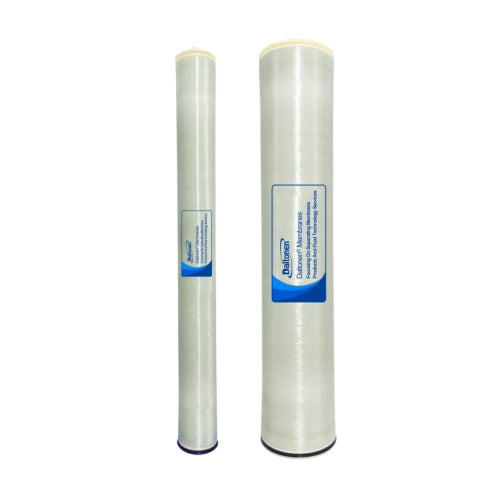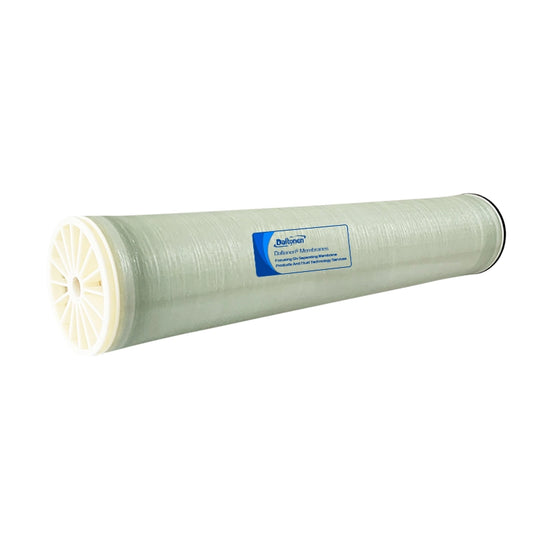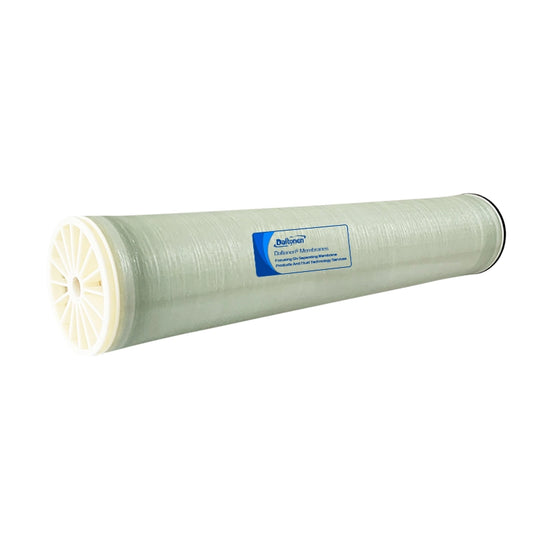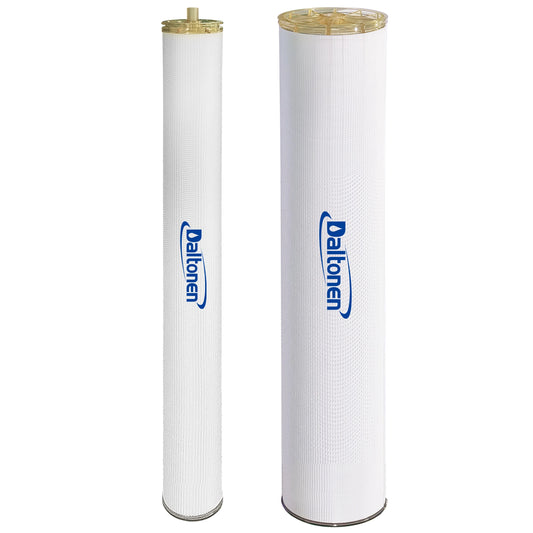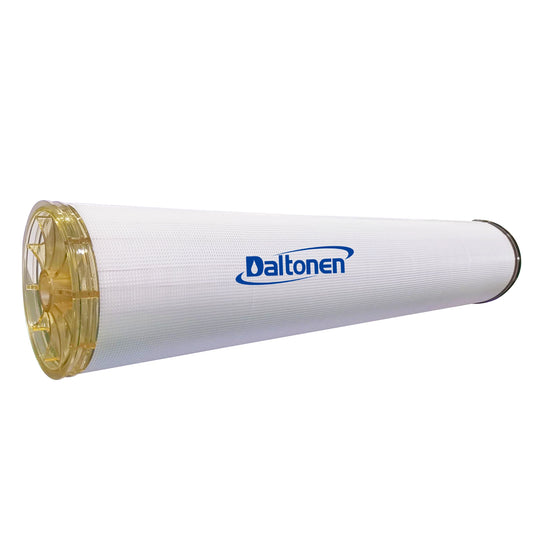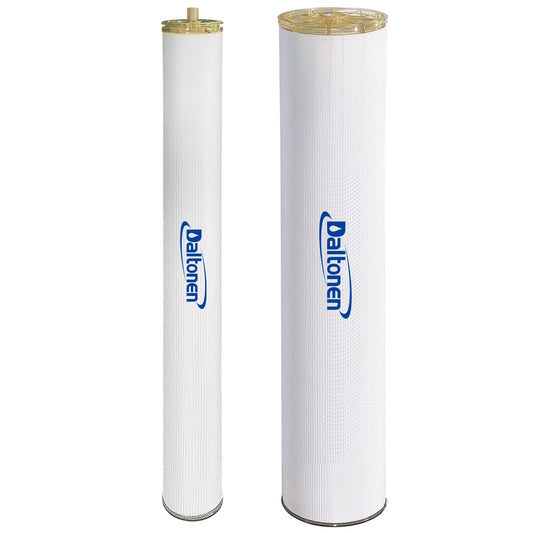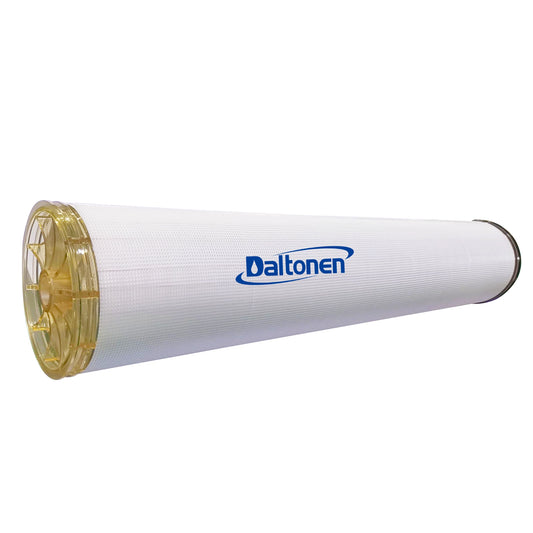A Comprehensive Professional Comparison: Industrial vs. Household Reverse Osmosis Membranes
A Comprehensive Professional Comparison: Industrial vs. Household Reverse Osmosis Membranes
While based on the same physical principles, the application of Reverse Osmosis (RO) technology in industrial versus household settings differs vastly in terms of objectives, operational environments, and constraints. This results in fundamental differences in the design, manufacturing, application, and maintenance of their core component—the RO membrane. This analysis provides an in-depth, professional comparison from multiple dimensions, including the membrane element itself, system design, operating parameters, maintenance strategies, and business models.

1. Differences in Membrane Element Design and Materials Science
1.1 Size and Physical Specifications
-
Industrial Membranes:Standard industrial membrane elements are large-format, spiral-wound modules, typically 8 inches in diameter and 40 inches long. This size provides a large surface area (e.g., ~400 sq. ft. per element), which is fundamental for large-scale water treatment. Multiple elements (6-8) are housed in series within a pressure vessel, and multiple vessels are arranged in parallel, enabling system capacities of hundreds of cubic meters per hour.
-
Household Membranes:Employ compact sizes such as 1812 or 3013, with diameters usually less than 4 inchesand lengths between 12-21 inches. They have a limited membrane area (typically < 20 sq. ft.) and are designed for ultra-compact installation under kitchen sinks.
1.2 Membrane Material and Performance Orientation
-
Industrial Membranes:Engineered for ultimate operational efficiencyand long-term stabilityunder harsh conditions.
-
High Salt Rejection & High Flux:Utilizing advanced interfacial polymerization techniques, industrial membranes achieve high salt rejection (>99.5%) coupled with high water flux, optimizing energy consumption per unit of water produced.
-
Fouling Resistance:Specialized fouling-resistant membranesare developed for complex wastewaters. These feature surface modifications for enhanced hydrophilicity and wider feed channels to mitigate foulant deposition.
-
Chemical Durability:Designed to withstand a wider pH range and aggressive chemical cleaning protocols necessary for maintenance.
-
-
Household Membranes:Prioritize low cost and health/safety compliance, while maintaining adequate baseline performance (rejection >95%).
-
Material Safety:Strictly comply with food-grade contact standards, focusing on controlling leachables.
-
Economy:Utilize cost-optimized materials and automated production. Their flux and fouling resistance are significantly lower than industrial grades but sufficient for pre-treated municipal water.
-
2. Complexity in System Design and Integration
2.1 Pretreatment Systems
-
Industrial Systems:Pretreatment is the essential, non-optional lifeline. It is often highly complex, tailored to the feed water (surface, well, or wastewater), and may include multi-media filtration, activated carbon, ultrafiltration/microfiltration, softening, and chemical dosing (antiscalants, reductants, biocides). The goal is to provide safe, stable feed water for the expensive RO membranes.
-
Household Systems:Pretreatment is a simplified, integrated package. It typically consists of a sediment filter and one or two carbon filter stages, primarily targeting chlorine, sediment, and odors in tap water to protect the more delicate RO membrane.
2.2 Core System Design and Recovery Rate
-
Industrial Systems:Feature complex core designs, often using multi-stage array configurations(e.g., 2:1). Concentrate from the first stage is fed to the second stage to achieve high overall system recovery rates (can exceed 75-80%). They incorporate high-pressure pumps, energy recovery devices (for seawater), and sophisticated instrumentation (PLC/SCADA) for real-time monitoring of pressure, flow, conductivity, and SDI.
-
Household Systems:Typically use a single membrane element in a single-stage design. They employ a low-pressure booster pump, have a fixed, lower recovery rate (around 30-50%, meaning significant wastewater), and are designed for simplicity and plug-and-play operation.
3. Operating Parameters and Performance Boundaries
|
Parameter |
Industrial RO Membranes |
Household RO Membranes |
|---|---|---|
|
Operating Pressure |
BW: 150-300 psi (10-20 bar); SW: 800-1000 psi (55-70 bar) |
Low Pressure: 60-100 psi (4-7 bar) |
|
Single Element Flow Rate |
High (e.g., >10,000 GPD / ~40 m³/day) |
Low (e.g., 50-400 GPD / ~0.2-1.5 m³/day) |
|
System Recovery Rate |
High (50% - 85%+), optimized via design |
Fixed and lower (approx. 30% - 50%) |
|
Feed Water Quality Requirements |
Stringent (e.g., SDI < 5, ORP < 200 mV) |
Lax (Designed for municipal tap water) |
4. Maintenance, Cleaning, and Lifecycle
4.1 Maintenance Strategy
-
Industrial Membranes:Predictive and preventive maintenanceis standard. Performance data (differential pressure, normalized flux, salt rejection) is analyzed to schedule Clean-In-Place (CIP)procedures using specialized chemicals (acids, caustics, surfactants) to restore performance.
-
Household Membranes:Maintenance follows a replacement-based model. When flux declines or water quality deteriorates, the membrane element is considered spent and is replaced entirely by the user. Chemical cleaning is not feasible or intended.
4.2 Design Life and Replacement Cost
-
Industrial Membranes:Have a design life of 3 to 5 years or more. Replacing a single element is costly, but the cost per unit volume of water produced can be economical. The goal is to maximize membrane service life through active maintenance.
-
Household Membranes:Have a design life of 1 to 3 years. They are treated as consumables. The replacement cost is relatively low, but the cost per unit of membrane area is typically higher than that of industrial membranes.
5. Business Model and Application Scenarios
-
Industrial Membranes:A project-basedproduct. Sales are deeply integrated with technical services and customized solutions. Clients are power plants, chemical plants, desalination plants, and municipal wastewater treatment plants. Their core demands are reliability, low lifecycle cost, and regulatory compliance.
-
Household Membranes:A consumer product. Sold through retail channels to end-user households. The core demands are convenience, safety, low initial cost, and quiet operation.
Conclusion
In essence, the difference between industrial and household RO membranes is the difference between "heavy-duty engineering equipment"and "compact, integrated appliances."
Industrial membranes and their systems are engineered as precision components for continuous, high-intensity, high-reliability operation in demanding environments, prioritizing极致 energy efficiency, recovery rate, and durability. Household membranes are consumer-grade products designed for intermittent, low-load conditions in homes, prioritizing safety, convenience, and cost-effectiveness within severe size and budget constraints. Though they share the same technological origin, they are genetically engineered for distinctly different paths.
